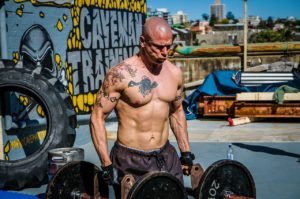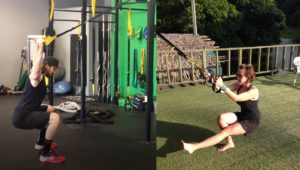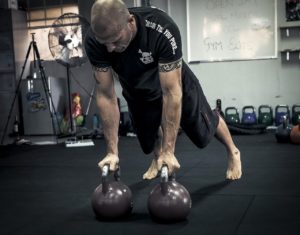N8’s Philosophy: Training
Training should be a part of your life, but not your whole life.
That’s because training our bodies and minds has implications outside of just being lean or losing 5lbs.
My philosophy on training and nutrition has evolved over the last decade, and is constantly doing so based on learning new information and trying to get better every day at being a person, husband, and trainer.
Here’s what I believe about TRAINING.
The goal of training is to get better while staying injury free. Having muscle is cool, functional, and healthy. Everyone from youth athletes to my 90 year old grandparents would benefit from having more muscle.
Muscle makes you stronger, have a faster metabolism, and keeps your joints healthier. Plus it makes you harder to kill.

What Kind of Training?
Resistance Training should comprise some part of EVERY PERSONS exercise routine. Weights are good, but becoming proficient at body-weight exercises is just as good if not better for most people.
Closed chain exercises (any exercise where you’re moving your body through space – like a pushup or squat) are SUPERIOR to open chain exercises (an exercise where you’re moving an object through space – bench press or leg extension), and should be prioritized.
You should spend the 70% of your time training the major movement patterns:
- Push
- Pull
- Hinge
- Squat
- Carry
Cardiovascular Training should be the other 30%.
Spend 15% of your time doing high intensity cardio like sprinting, kettlebell swings, or HIIT Intervals.
The last 15% should be low intensity cardio like walking. Walking is both a low impact way of moving the body, burning calories, helping your posture and clearing your mind. You should take a walk every day if possible. Outside is better because treadmills don’t allow you to use your hamstrings and a normal gait.
For Beginners: Spend your first 3 months figuring out how to move well in all the major movements before you add a bunch of weight. You have the rest of your life, and there’s no point in benching 135 if you look like you’re going to have a brain aneurysm doing it.
Hire a trainer or someone you trust to show you how to exercise and to teach you the basics. Spending a couple months learning how to use a Suspension Trainer is a great idea.

What Exercises?
- Push
- Pushup, Dumbbell Bench Press, Barbell Floor Press, Dumbbell Shoulder Press
- Pull
- Dumbbell row, Meadows Row, Pullup, Suspension Trainer Row
- Hinge
- Deadlift, Single Leg Deadlift, Kettlebell Swing
- Squat
- Goblet Squat, Front Squat, Barbell Box Squat, Bulgarian Split Squat, Reverse Lunges, Suspension Trainer Single Leg Squat
- Carry
- Farmers Walk, Suitcase Carry, Visor Carry, Bear Hug Carry
What Sets and Reps?
Everyone should train to get stronger, but that doesn’t mean you need to max out every month (or year). Powerlifters do their 1 Rep Max once or twice per year before a meet, and their bodies are strong and efficient at moving heavy weights.
Stay in the 4-6 rep range for most of your strength work.
Use 6-15 reps for most of your sets, this is ideal for building muscle and getting stronger
Do 15-50 reps occasionally as a finisher. You can build muscle in that rep range, but it should only comprise a small part of your training.

Execution
Dave Tate says “Make light exercises feel heavy, and heavy exercises feel light”.
This means that when you’re doing a dumbbell curl, overhead press, or pushup, you should be focusing hard on controlling your entire body while doing the exercise. Keeping it slow and controlled, you should be able to stop the movement at any point.
Do this by tightening all four quadrants of your core, and “pulling your ribs down” into a baby crunch. Yes, even when you’re doing arms.
On the other side, make heavy exercises feel like by accelerating as much force into them as you can for a deadlift, bench press, or front squat.
This type of training takes practice and intention.





